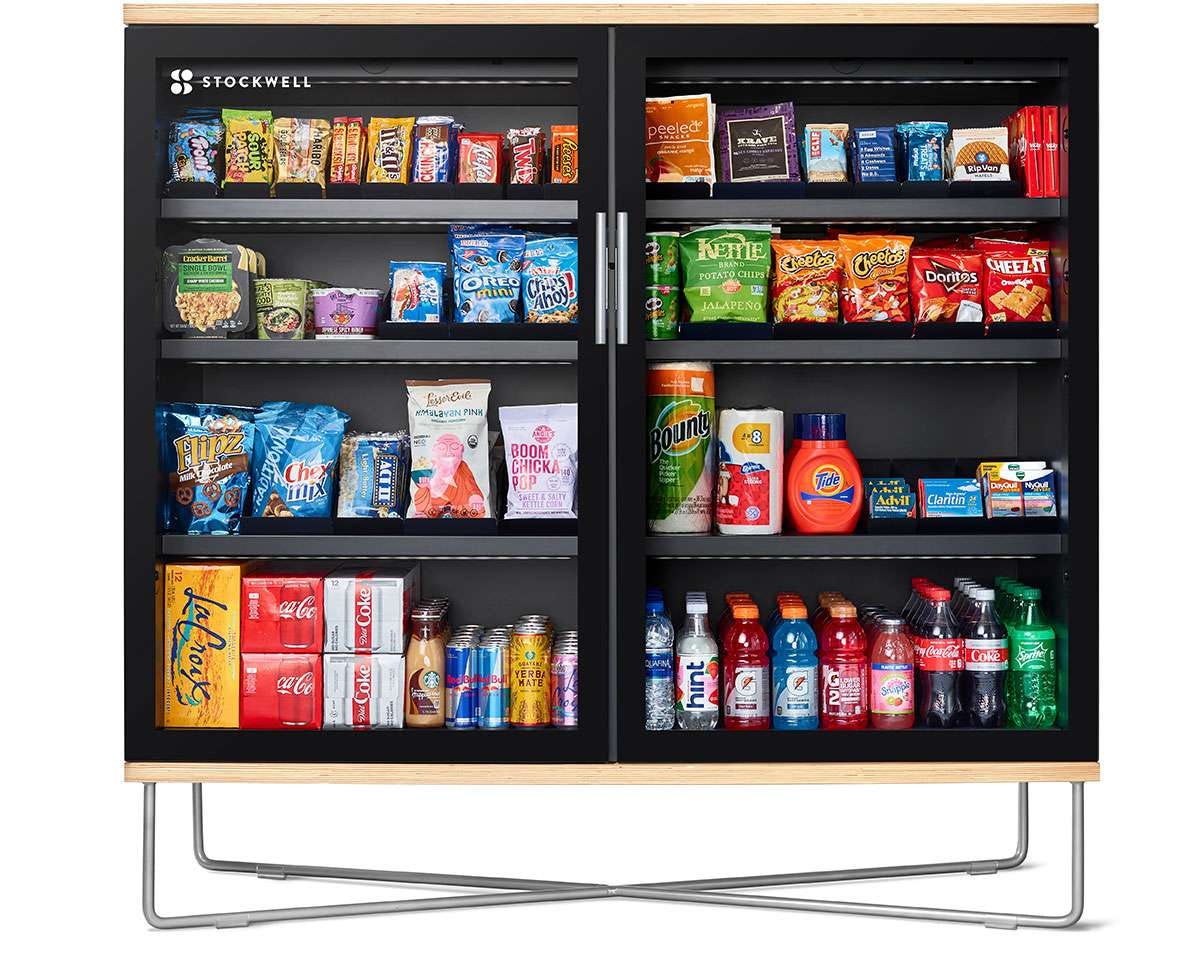Stockwell Has The Goods. Announcing NEA’s Series B Investment

In tech, timing is everything. That’s why I am thrilled to finally announce NEA’s Series B investment in Stockwell, one of the most disruptive commerce companies I’ve seen, and the largest deal I’ve led in the 7 years I’ve been at NEA.
Stockwell is delivering on its mission of transforming any space into a modern retail experience with a next generation vending machine. It just achieved a 1,000 store milestone. Having spent the last year on their board, I'm beyond eager to shine some light on what founders Paul McDonald and Ashwath Rajan are building.
Stockwell, with its self-serve stores evoking the vending machines of decades past, captured this investor’s imagination. I admired the way the company listened, learned, made changes and got to work. It reminded me of my prior experiences with Jet.com and Casper, which taught me to tune out the noise and zoom in on the potential. Both of those companies were disrupting key aspects of the consumer experience (Casper through manufacturing, packaging and point of sale; Jet.com through pricing models and logistics) and both have played a meaningful role in the evolution of commerce.
Without those businesses as a backdrop, the extraordinary potential of Stockwell may not have been as clear to me. But at NEA we think about each investment as part of a much broader framework—we ask, Where is this all going? What does the ‘end state’ look like? And it may have required a squint, but even a couple of years ago we could see that Stockwell aligned with our core thesis about the future of commerce.
A “Perfect Storm”
The greatest value is created at the intersection of multiple technological or behavioral shifts, and anyone who dismisses Stockwell as simply another “vending machine” company is missing that point. The point—and the power of Stockwell’s vision—is that it is fueled by several trends unfolding concurrently:
I need it now: the ‘on-demand’ economy’s rapid transformation from novelty to non-negotiable has made near-instant gratification table stakes for innovative companies; customers are no longer content to wait for what they can have right now.
A new era of (in)sight: computer vision technology is entering the mainstream, with the power to unleash a torrent of new products and services—some eagerly anticipated, others not yet conceived. Advanced analytics and machine learning will transform retailers’ ability to understand their market and optimize the customer experience.
Hand-in-glove: A wave of Direct-to-Consumer (D2C) brands are getting increasingly creative about how and where they reach consumers; a spate of experimental retail concepts—some demonstrating real traction—make it clear that new distribution channels and use of physical spaces will be of growing importance to D2C brands looking to grow their markets and connect with customers in new ways.
Location, location… amenities?: The real estate industry is far from immune to tech-driven disruption, and the themes transforming commerce will reshape many aspects of real estate too. We’ve seen this with the infusion of on-demand services such as Hello Alfred and believe Stockwell has a role to play here too.
Something for Everyone
When it comes to product market fit, Stockwell nails it. They offer highly compelling value propositions for each of their core constituent groups (consumers, merchants, and buildings). Customers get a frictionless, always-open experience—and a new way to discover relevant products. Retailers get all the granular data they want about consumer behavior during the shopping process, straight from the Stockwell shelf space (i.e. no reliance on Google, Amazon or Facebook). And the buildings can deliver the amenities people want, while lessening their dependency on physical proximity to retail.
This all translates to strong unit economics for Stockwell and a rock-solid foundation for a highly scalable, capital efficient business model. Notably, it’s a model that also diverges in some important ways from the typical D2C startup:
Captive audience: Because Stockwell is onsite where a customer works, lives and plays, it is almost certain to be the most convenient and therefore a highly utilized option.
New purpose for empty, unused space: There’s no either/or conundrum for building managers—Stockwell’s small, self-contained units literally capitalize on “white space,” turning unused, empty space into value-generating square footage.
Sticky product: Once a Stockwell is in a location, it’s unlikely to be removed—particularly when tenants love it!
Stands on its own: Literally and figuratively—unlike 95% of consumer companies, Stockwell doesn’t rely on platforms such as Facebook, Amazon and Google for growth. This affords the company greater control of its own destiny and avoids the inherent plateau/market saturation risk associated with those platforms.
Over time, Stockwell will look more and more like a pure platform. It may be Amazon Go striking fear in the hearts of retailers, but Stockwell has the most viable computer vision-enabled retail format that exists today. And over time, we can expect to see Stockwell in many more form factors, with tremendous potential to unlock new business models (e.g. membership programs, targeted advertising) over time.
Among the many reasons I backed Stockwell, this last one is perhaps the most important: the founding team. Paul McDonald and Ashwath Rajan are two of the most talented product people I’ve ever met. Both are former Googlers—Paul ran several huge product teams during his 13-year tenure (including Consumer Surveys and Gmail), and Ash spent two years in Google’s prestigious Associate Product Manager (APM) program, building on his formidable expertise in machine learning and other data science disciplines.
I’m thrilled to partner with Paul and Ash, along with our co-investors at First Round, Forerunner, Homebrew, DCM and GV. We’re excited about Stockwell’s future and delighted to be a part of the journey!


